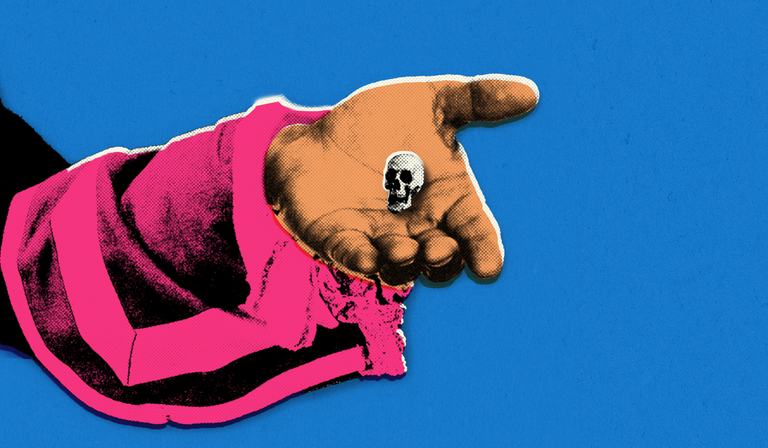On a grim weekend this April, I made the trip to Helsingør, on Denmark’s Øresund strait. William Shakespeare never did so, but in 1586 three actors who would become his colleagues in the Lord Chamberlain’s Men did visit, performing in a touring company before Frederick II of Denmark. Over a decade later, Shakespeare would use their memories of Helsingør’s castle, anglicised as “Elsinore”, to inspire the damp and draughty setting of Hamlet.
In Hamlet, an alienated prince and his incestuous family turn on each other, leaving the state to totter. Shakespeare’s colleagues clearly captured in their retellings something of Helsingør’s empty posturing and profound vulnerability. The fortress castle looks tough and tall across the waters—plenty of ramparts and battlements for ghosts to stalk in the mist—but this is the narrowest point of the strait that divides Denmark and Sweden. With a royal family distracted by their own revenges, it would be the work of an afternoon for a Swedish prince to sail across the two-and-a-half miles and take control. Shakespeare, with his usual grasp of hearsay geography, makes him Norwegian: Fortinbras.
Fortinbras exists on the periphery of Hamlet, but he is fundamental to the play’s structure: our reminder that the breakdown of families is symbiotic with the failure of states—and that in times of chaos you should never trust an international peace deal to hold. He is the external avenger, who unlike Hamlet has no hesitation in seeking revenge for his own father, killed decades ago by Hamlet père. Yet although a slew of highly conceptual productions have opened across the UK in the past few months, almost all have entirely excised his character.
In an era in which the turmoil of the world at large seems ever more reflected in the febrility of our own inner (and online) lives, sparky adaptations of Hamlet are popping up all over the shop. The most high-profile is the Royal Shakespeare Company’s collaboration with Radiohead’s Thom Yorke, who has reworked the music of his band’s 2003 album Hail to the Thief as the soundtrack to a dance-based, 100-minute speedrun through the basic Hamlet narrative. In a preview article for the Financial Times, the Shakespearian academic Jonathan Bate suggested that directors are particularly drawn to bizarro Hamlets in our current moment because “Hamlet remains the profoundest meditation on the state of nations that are beset by corruption and instability”. That should be true—yet, when you actually see these productions, it is not.
Counterintuitively, all of them seem to turn inward, not outward. Their performers range from a company of Peruvian actors with Down’s syndrome, for whom Hamlet becomes a text about dignity and self-reliance, to a bipolar survivor of psychiatric units and the prison system, whose one-man version carries a visceral understanding of male violence and its links to mental health. These two productions, of which more later, are particularly brilliant. Unlike full-length Hamlets, however, such adaptations fisk the play for a single theme about our interior worlds. The Fortinbrases, the kings of Norway and Poland, even the pirates roaming the pass to England rarely feature.
Modern productions of ‘Hamlet’ all seem to turn inward, not outward
The announcement of Yorke’s collaboration with the RSC generated predictions that we should expect a theatrical denunciation of Donald Trump or of western meddling in the Middle East. Hail to the Thief, a play on the American presidential anthem “Hail to the Chief”, was Radiohead’s response to George Bush’s war on terror, and this new mashup hit Stratford-upon-Avon just as the current US president bombed Iran. Yet such context barely intrudes on a production that presents a straightforward tale of an emo adolescent who hates his stepfather—and happens to have a rock background.
Instead, what makes the show a success is an old-school demonstration of acting talent. Samuel Blenkin, in his RSC debut, is a revelatory new Hamlet: awkward, adolescent and wryly aware of his nebbish weakness. He’s up against a twitchy Paul Hilton as Claudius, an actor who is never less than haunted and haunting, with Ami Tredrea as an omnipresent Ophelia who gets her own go at “To be, or not to be”.
What’s lost is huge chunks of the text, including most of Gertrude’s part, leaving Claudia Harrison struggling to make an impact. There are elisions in almost every line, death by a thousand cuts to the rhythms of Shakespeare’s verse. Physical theatre veterans Steven Hoggett and Christine Jones substitute in ecstatic dance sequences as summaries for lost scenes. The accelerating ending is a headlong rush into chaos. No Fortinbras, no Trump, no sense of the political ramifications of personal corruption. Just a breathtaking explosion of intergenerational conflict, to the strains of “Sit Down. Stand Up”.
This highly abridged version comes amid a broader trend for niche micro-Hamlets. Chela De Ferrari’s Spanish-language production for Teatro La Plaza, which recently featured at the Barbican, runs at 95 minutes, just enough time for its cast to reframe key scenes from the perspective of families struggling with Down’s syndrome. Forbidding the romance between Ophelia and Hamlet, Polonius becomes a stand-in for all parents who believe that their Down’s children are too vulnerable for love and sex; the cast wrestle with Hamlet’s lament for men ruined by “a vicious mole of nature, as in their birth”, before “To be, or not to be” becomes a meditation on the termination of pregnancies.
Regeneration Theatre’s production, with Mark Lockyer, is the same length, a short and comprehensible introduction to the story for new audiences but a marathon for a solo performer who channels each of Elsinore’s inhabitants in turn. Lockyer is never less than captivating, but he is at his best when capturing the violence that simmers under Hamlet’s instability. At times, this feels like a virtuoso reading of Hamlet as a dramatic poem, and the absence of stage business leaves time for director Fiona Laird to retain more of the text. Nonetheless, like Teatro La Plaza’s, this is still a Hamlet with a specific social project—not least as the basis for Regeneration’s continuing workshops in prisons and locations related to mental health and homelessness.
At times, this feels like a virtuoso reading of Hamlet as a dramatic poem...
At the other end of the scale, the beginning of the year saw Rupert Goold’s five-hour RSC Hamlet, set on a sinking steamer that closely resembled the Titanic. In a rare Goold flop, few critics could resist the “shipwreck” pun. Yet even this endurance test stripped out any reference to an external world beyond the “HMS Elsinore”—no “HMS Fortinbras” coming along to mop up survivors at the end. (Goold similarly stripped the geopolitics from his 2005 version with Tobias Menzies, telling critics it distracted from a play about fathers and sons.) What it did offer was a showcase for Luke Thallon’s deadpan delivery, a trademark he uses here to deconstruct the cadence of Hamlet’s language and find disconcerting new readings.
Set in a small nation watchful of its neighbours, Hamlet has always contained the world. But with our own world in conflict, directors are often choosing to bite off only manageable chunks. Regeneration Theatre and Teatro La Plaza are good examples of such targeted projects: unlocking Shakespeare’s text for specific marginalised groups and doing good in the small ways that socially conscious theatre still can. But beyond them? Using Hamlet to confront our own crop of corrupt dictators appears to be a task on too grand a scale.













